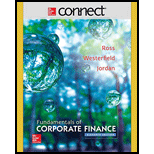
Case summary:
This case discusses the circumstances that have to be encountered by a mortgage business broker. Person JC is a new mortgage business broker and her cousin MK has approached to have a mortgage for a house that is being built. The house construction has to be completed in three months and he needs the mortgage at the completion stage of the house. The requirement of person MK is 25-year, $400,000 fixed-rate mortgage to be repaid on a monthly basis.
Person JC has agreed to lend the money at the present market rate of 6%. Due to having insufficient fund with the person JC, he has approached the person IT, the President of IT Insurance Corporation for purchasing mortgage. Person IT has agreed the demand from person JC except on the price of the mortgage because he is unwilling to set a price on the mortgage loan, but rather he does agree in writing to purchase the mortgage at the market rate in three months. Moreover, the market has Treasury bond futures contract with a face value of $100,000 per contract at a maturity of three months.
Characters in the case:
- Person JC: Owner of the mortgage business
- Person MK: Customer of JC
- Person IT: President of IT Insurance Corporation
- Company IT: An insurance corporation
To determine: The significant risks expected by person JC from this deal.
Want to see the full answer?
Check out a sample textbook solution
Chapter 23 Solutions
Connect 1 Semester Access Card for Fundamentals of Corporate Finance
- Answer this qnarrow_forwardWhat is the annotaion? Please help give some examples.arrow_forwardItem 2 Sequoia Furniture Company’s sales over the past three months, half of which are for cash, were as follows: March April May $ 426,000 $ 676,000 $ 546,000 Assume that Sequoia’s collection period is 60 days. What would be its cash receipts in May? What would be its accounts receivable balance at the end of May? Now assume that Sequoia’s collection period is 45 days. What would be its cash receipts in May? What would be its accounts receivable balance at the end of May?arrow_forward
- Andres Michael bought a new boat. He took out a loan for $23,600 at 3.25% interest for 3 years. He made a $4,120 partial payment at 3 months and another partial payment of $3,440 at 6 months. How much is due at maturity?arrow_forwardOn May 3, 2020, Leven Corporation negotiated a short-term loan of $840,000. The loan is due October 1, 2020, and carries a 6.60% interest rate. Use ordinary interest to calculate the interest. What is the total amount Leven would pay on the maturity date? (Use Days in a year table.)arrow_forwardNolan Walker decided to buy a used snowmobile since his credit union was offering such low interest rates. He borrowed $4,300 at 3.75% on December 26, 2021, and paid it off February 21, 2023. How much did he pay in interest? (Assume ordinary interest and no leap year.) (Use Days in a year table.)arrow_forward
- Business/Professional Ethics Directors/Executives...AccountingISBN:9781337485913Author:BROOKSPublisher:Cengage
 Intermediate Financial Management (MindTap Course...FinanceISBN:9781337395083Author:Eugene F. Brigham, Phillip R. DavesPublisher:Cengage Learning
Intermediate Financial Management (MindTap Course...FinanceISBN:9781337395083Author:Eugene F. Brigham, Phillip R. DavesPublisher:Cengage Learning  EBK CONTEMPORARY FINANCIAL MANAGEMENTFinanceISBN:9781337514835Author:MOYERPublisher:CENGAGE LEARNING - CONSIGNMENT
EBK CONTEMPORARY FINANCIAL MANAGEMENTFinanceISBN:9781337514835Author:MOYERPublisher:CENGAGE LEARNING - CONSIGNMENT Cornerstones of Financial AccountingAccountingISBN:9781337690881Author:Jay Rich, Jeff JonesPublisher:Cengage Learning
Cornerstones of Financial AccountingAccountingISBN:9781337690881Author:Jay Rich, Jeff JonesPublisher:Cengage Learning




